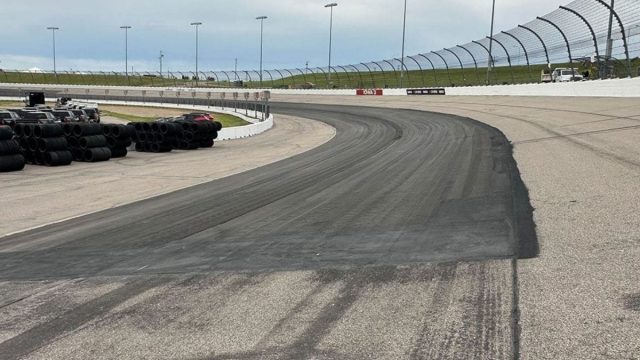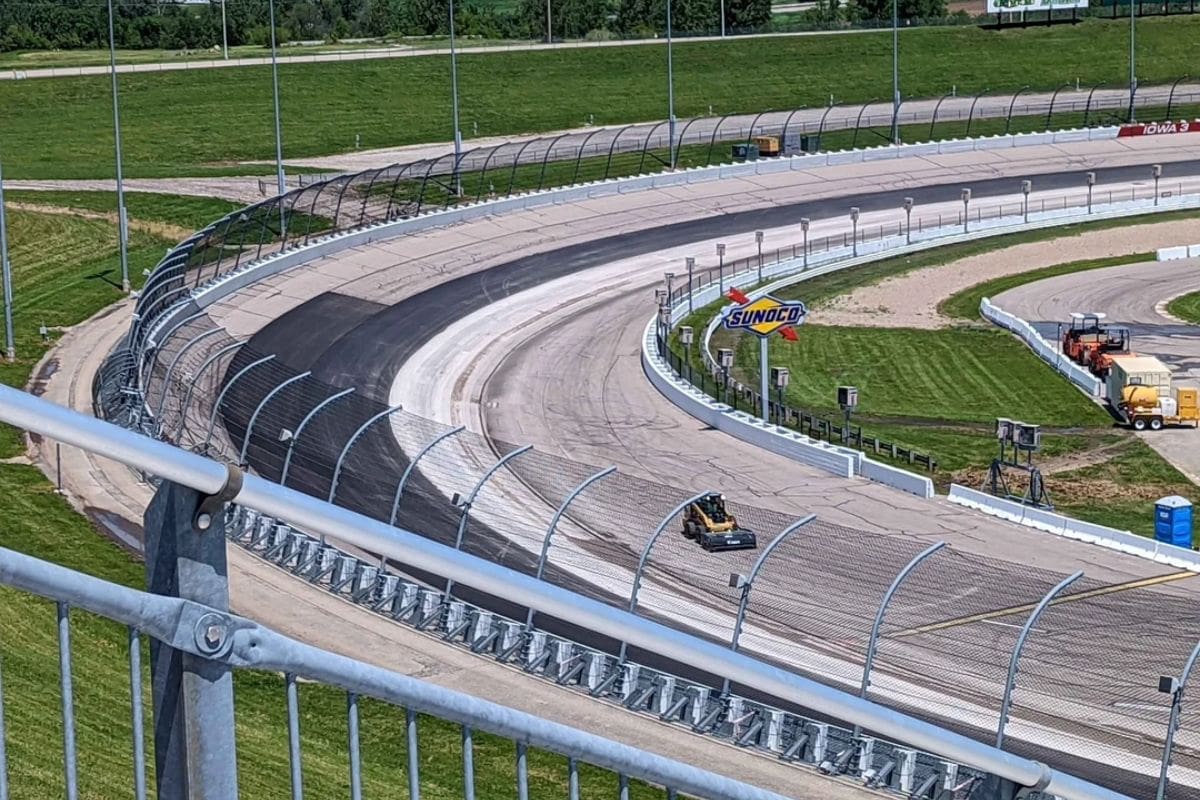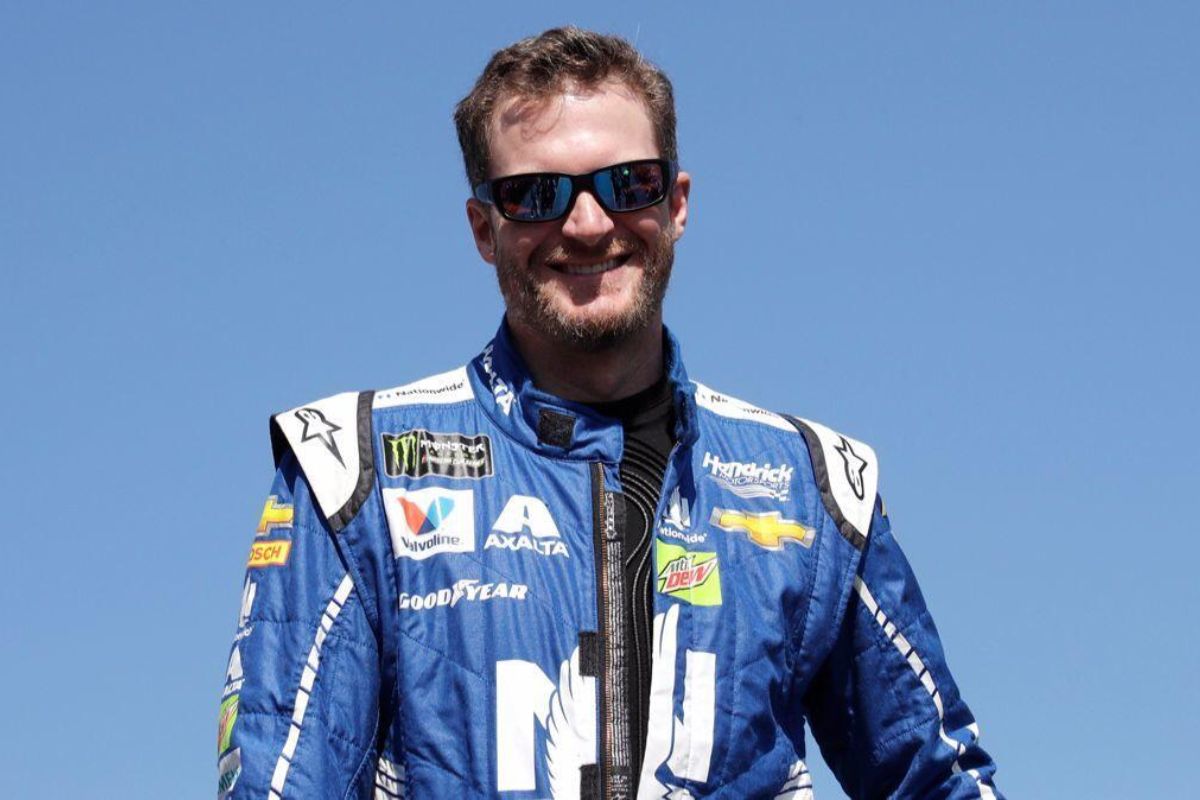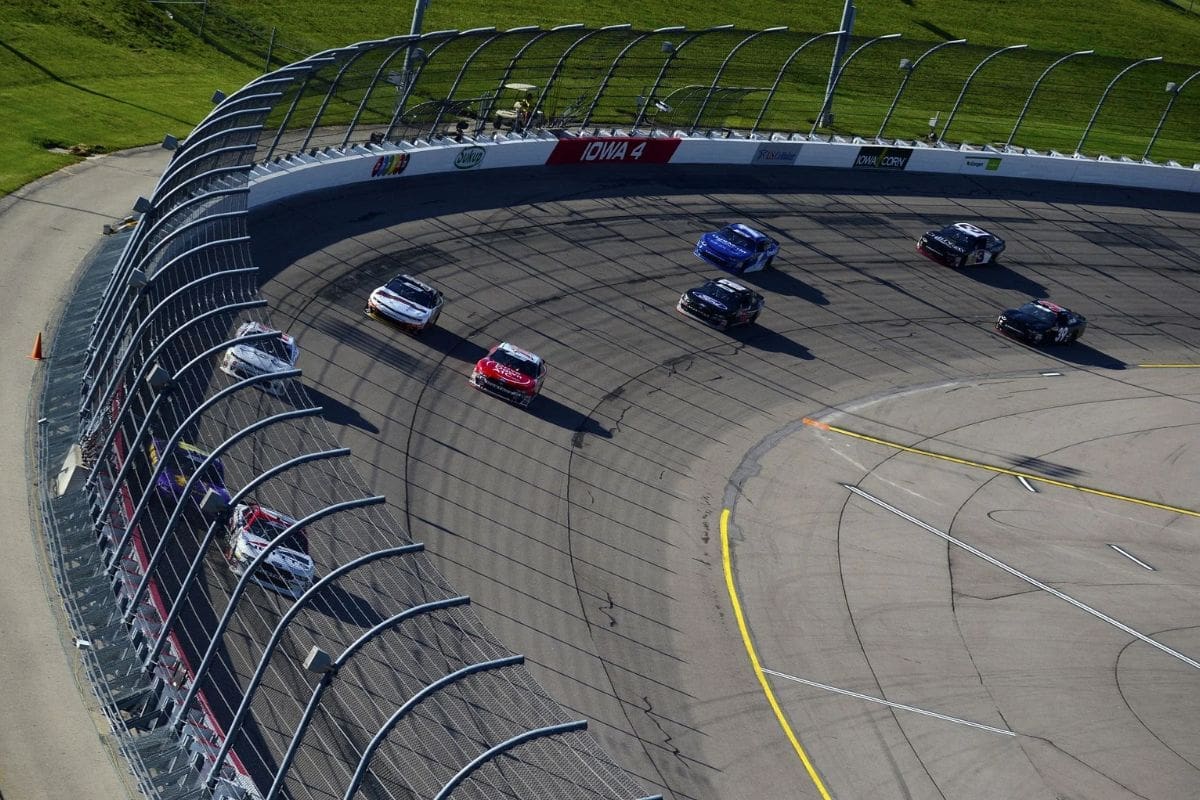Partial Repave at Iowa Speedway: NASCAR’s partial repave of Iowa Speedway, addressing only the most compromised sections, has sparked a spirited debate among racing enthusiasts and professionals equally. This unconventional strategy introduces a mixed surface that complicates the dynamics of competitive racing, particularly influencing the utility of the bottom lane. While NASCAR officials are confident in their approach, emphasizing precision and strategic foresight, notable figures such as Dale Earnhardt Jr. have voiced concerns regarding the impact on safety and race quality.
Key Highlights
- NASCAR faced criticism for partial repaving, raising concerns about safety and competitive fairness.
- The repave resulted in a mixed track surface, challenging drivers with inconsistent tire wear and traction.
- The bottom lane’s altered significance has reduced racing lines and limited overtaking opportunities.
- Dale Earnhardt Jr. and others worry that grip differences could homogenize racing and funnel drivers.
- Teams must adapt dynamically, balancing speed and tire conservation, intensifying the strategic nature of the Iowa Corn 350.
Repaving Controversy at Iowa Speedway
Frequently at the center of heated debates, the recent partial repaving at Iowa Speedway has ignited significant controversy among NASCAR drivers and fans due to concerns about track integrity and racing dynamics. Originally, the mile-long track’s repaving was not on the agenda; however, the severe winters in Iowa caused substantial damage, necessitating urgent repairs, particularly in the bottom lane of the corners. This unforeseen development has brought to the forefront a myriad of apprehensions regarding the potential unevenness of the racing surface and the broader implications for competitive racing.
The decision to repave only the most damaged sections rather than undertaking a thorough resurfacing has resulted in a mixed track surface. This creates a unique challenge for drivers who must adapt to varying levels of grip and consistency as they navigate the course. The partial repave raises questions about the balance of performance, as some drivers may find an advantage or disadvantage depending on their ability to handle these adjustments effectively. The bottom lane, being essential for overtaking maneuvers, could now either become a strategic asset or a perilous zone, altering the dynamics of race strategy and execution.
Furthermore, the integrity of the track surface is paramount for ensuring safety and competitive fairness. Variations in the asphalt could lead to unpredictable tire wear and potential mechanical failures, adding an element of uncertainty that could detract from the quality of racing.
NASCAR’s Reassurance on Track Quality
In response to the ongoing concerns about track integrity and racing dynamics, NASCAR’s Senior Vice President of Competition, Elton Sawyer, has proactively addressed the situation by affirming the high standards of the recent repairs at Iowa Speedway. Sawyer has articulated a clear message of reassurance to both fans and competitors, emphasizing that the thorough repaving was executed with meticulous attention to detail and that the quality of racing will not be compromised.
Iowa Speedway Corners with partial repave. What kind of racing will this lead to? pic.twitter.com/ueqA7sHtRK
— Trackside (@Tracksidenow) June 11, 2024
Sawyer’s confidence in the track’s integrity stems from the rigorous processes employed during the repair phase. The repaving project was undertaken with a deep understanding of the complexities involved in maintaining a surface conducive to high-speed, multi-groove racing. By focusing on the most critical sections of the track, NASCAR aims to preserve the characteristic racing dynamics that Iowa Speedway is known for, while ensuring safety and performance are not adversely affected.
“We’re confident the repairs are to a high level, and it’s not going to be an issue and we’re still going to have some multi groove racing around the racetrack. We’re looking forward to getting out there and getting cars on the racetrack and seeing exactly how things unfold.” – Sawyer
Moreover, Sawyer has expressed enthusiasm about the upcoming events, suggesting that the adjustments could even improve the competitive nature of the races. He highlighted that the strategic repairs are expected to provide a blend of old and new surface qualities, potentially introducing new racing lines and overtaking opportunities.
Dale Earnhardt Jr.’s Critique of Track Conditions
Dale Earnhardt Jr., leveraging his extensive experience and insight as both a former driver and current commentator, has raised substantial concerns regarding the effectiveness of the recent partial repave at Iowa Speedway. Earnhardt Jr.’s critique is particularly focused on the track’s potential to support multiple racing grooves, a key aspect for competitive racing. He contends that the differences in the grip levels between the newly repaved sections and the older parts of the track could inadvertently funnel drivers into a single groove, thereby undermining the racing dynamics that Iowa Speedway is known for.
“You’re kidding yourself if you think that there’s going to be multiple grooves, and you’re kidding yourself if you think you’re going to use that old asphalt racing a normal line. You’re never going to want to be in it. Once they work that new asphalt groove in, that’s where you’re gonna have to be, to be competitive.” -jr
From a driver’s perspective, Earnhardt Jr. emphasizes the natural inclination towards newer asphalt, which typically offers better grip and, consequently, a competitive advantage. This preference could lead to a homogenization of racing lines, where all competitors vie for the same ideal path. The implications of such a scenario are multifaceted.
Furthermore, Earnhardt Jr. questions the long-term viability of such a partial repave. By selectively repaving portions of the track, NASCAR has introduced an inherent inconsistency in track conditions that may not stabilize quickly. This could lead to an unpredictable racing surface that drivers have to adapt to continually, potentially compromising the safety and integrity of the races held at Iowa Speedway.
Concerns Over Racing Quality
The partial repave at Iowa Speedway has sparked significant debate among industry experts, with many questioning whether the uneven track conditions will ultimately compromise the quality of racing. Concerns have been raised about the potential reduction in racing lines, which could limit overtaking opportunities and lead to a more processional race. The uncertainty surrounding the performance of cars on the newly paved sections versus the older, potentially more abrasive areas of the track adds another layer of complexity to the upcoming Iowa Corn 350.
Experts argue that the uneven surface might lead to inconsistent tire wear, with cars experiencing varying levels of grip as they navigate different parts of the track. This inconsistency could make tire management a critical aspect of race strategy, demanding higher precision from both drivers and pit crews. Furthermore, the reduced number of racing lines might restrict overtaking opportunities, potentially diminishing the dynamic and competitive nature typically associated with NASCAR events.
Anticipation and Final Thoughts
While lingering concerns over track conditions persist, the excitement surrounding NASCAR’s return to Iowa Speedway is tangible, with fans and stakeholders enthusiastic to witness how the partial repave will shape the dynamics of the Iowa Corn 350. The anticipation is fueled by the track’s history of delivering thrilling, close-quarters racing and the unknown variables introduced by the repaving.
The partial repave, targeting only sections of the track, introduces a unique blend of old and new asphalt, creating potential for varied grip levels and tire wear. This contrast could lead to a high-stakes environment where driver skill and team strategy are paramount. Teams may have to adjust their setups dynamically, balancing speed with tire conservation, especially in the areas where the new asphalt meets the old. The differing track surfaces could also provoke more frequent pit stops, further intensifying the strategic aspect of the race.
From an analytical perspective, the partial repave offers an intriguing canvas for real-time data analysis. Teams will likely rely heavily on telemetry and historical data to craft their race strategies, while the drivers’ ability to adapt to the changing track conditions could be decisive. The impact on race dynamics cannot be understated; the combination of fresh and worn surfaces may lead to unpredictable handling characteristics, potentially altering overtaking techniques and racing lines.
News in Brief: Partial Repave at Iowa Speedway
The partial repave at Iowa Speedway, while controversial, represents NASCAR’s strategic attempt to balance track maintenance with competitive innovation. By addressing only the most damaged sections, NASCAR aims to preserve the track’s established dynamics, though concerns over safety and racing quality persist.
The execution of this repaving strategy will be closely scrutinized, as its success or failure could greatly impact both driver performance and the general integrity of the racing experience at Iowa Speedway.
Our Reader’s Queries
Q. Does NASCAR race at Iowa Speedway?
A. The upcoming race on Sunday marks a significant milestone for the NASCAR Cup Series, as it will be the inaugural event at Iowa Speedway. This oval short track has previously hosted Xfinity, Truck, and IndyCar events, providing a familiar backdrop for many drivers transitioning to the Cup Series. While it presents a fresh challenge for the Cup drivers due to its debut on their schedule, several have prior experience at Iowa Speedway from competing in other series. This dual perspective sets the stage for an intriguing race where adaptation and track knowledge will play pivotal roles.
Q. Who owns Iowa Speedway?
A. Iowa Speedway, constructed between 2005 and 2006 under the ownership of Paul Schlaak of U.S. Motorsports Entertainment Corporation, stands as a testament to American motorsport ambition. Its acquisition by International Speedway Corporation in 2013 marked a pivotal moment, bringing the track under the auspices of NASCAR, a move that solidified its place within the NASCAR racing circuit. Today, Iowa Speedway continues to host a variety of racing events, showcasing its evolution from a visionary project to a cornerstone of NASCAR’s racing calendar.
ALSO READ: Iowa Corn 350 Weather Forecast: What to Expect at Iowa Speedway



